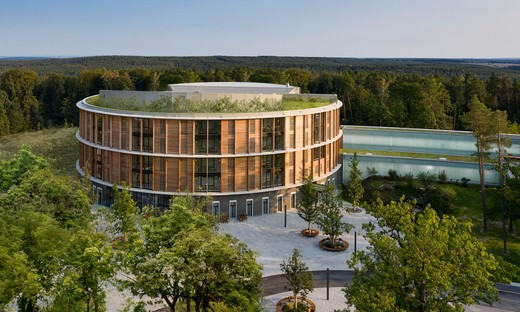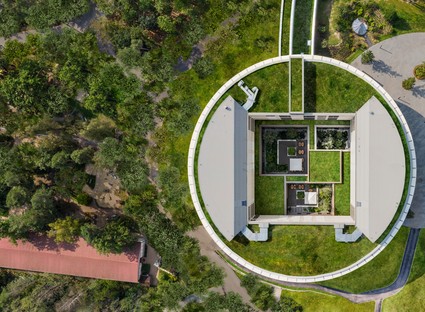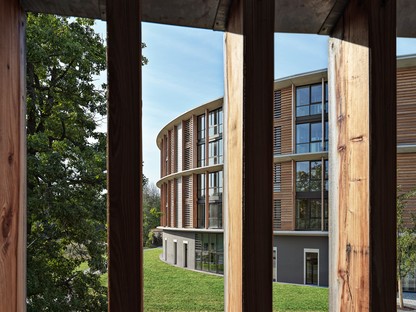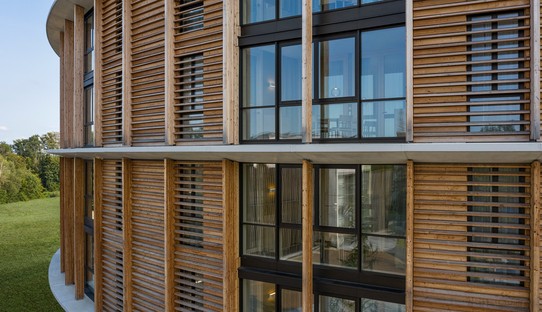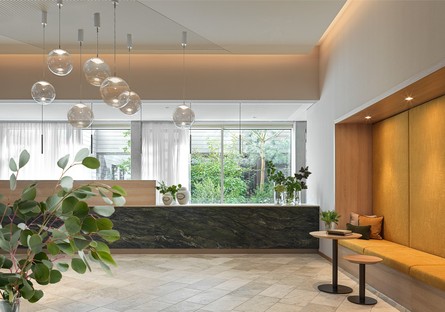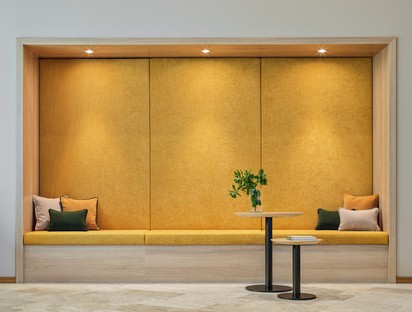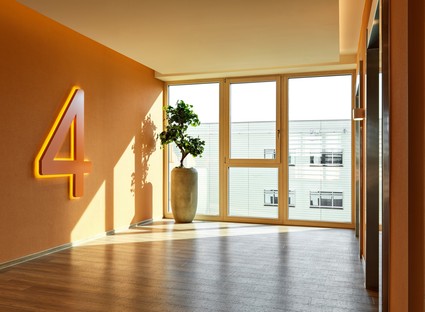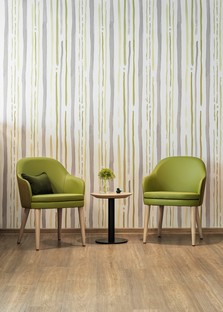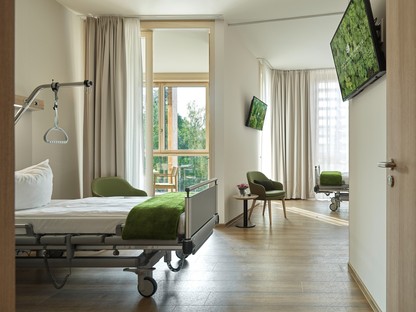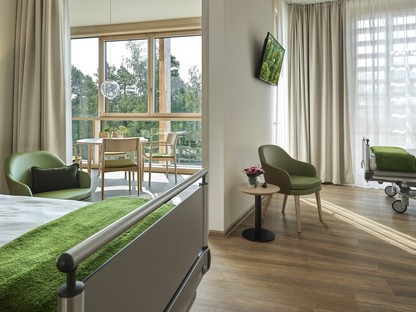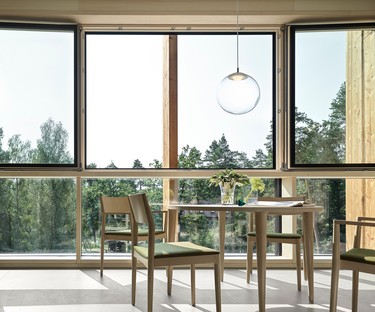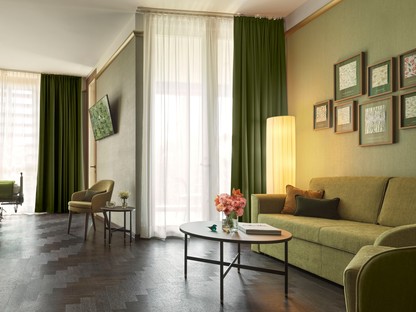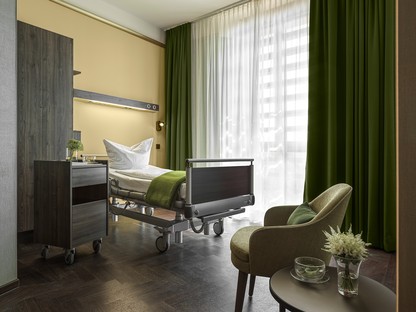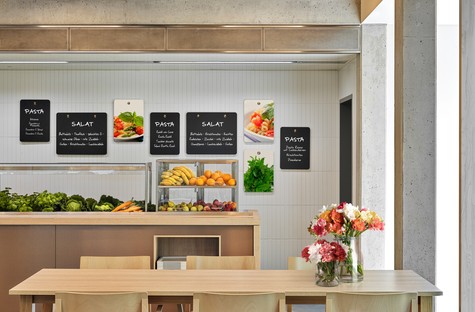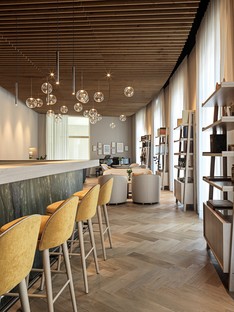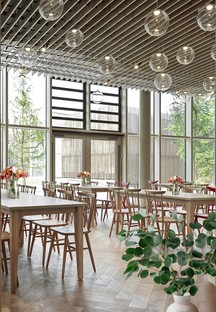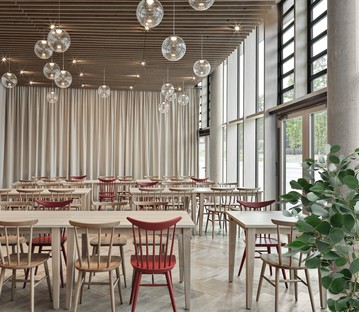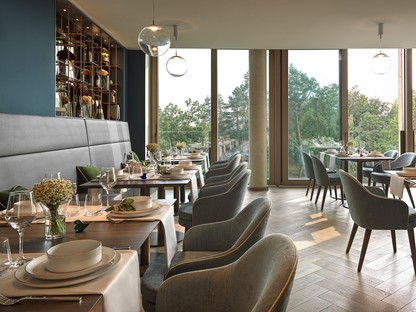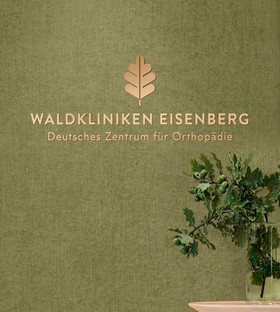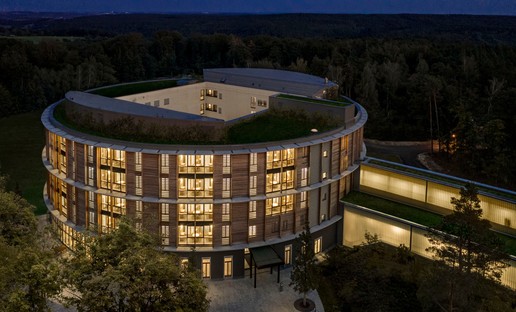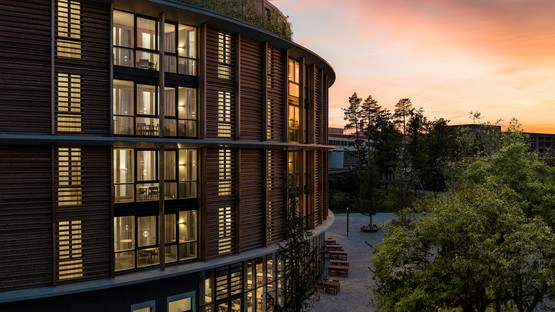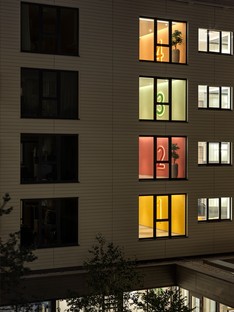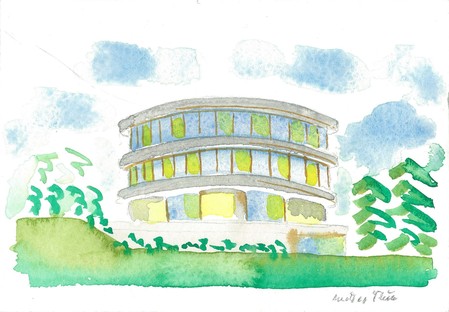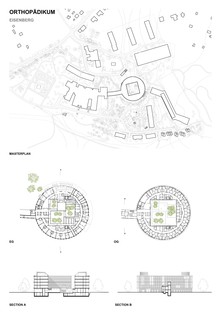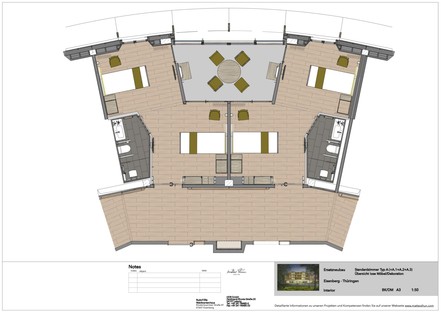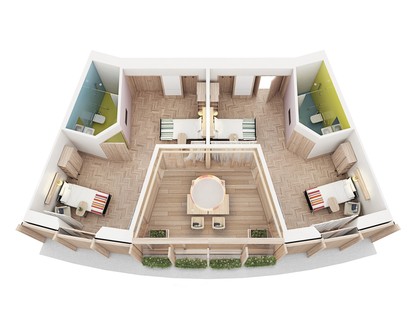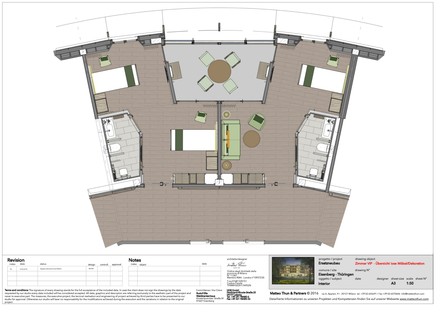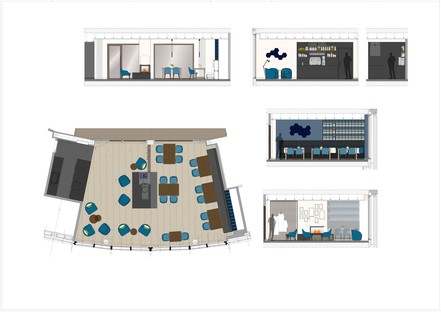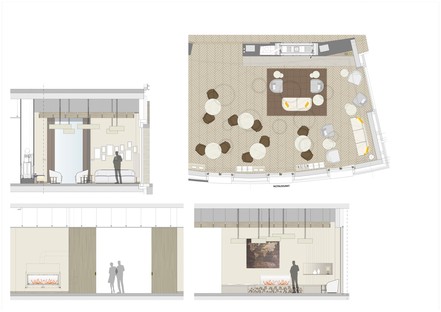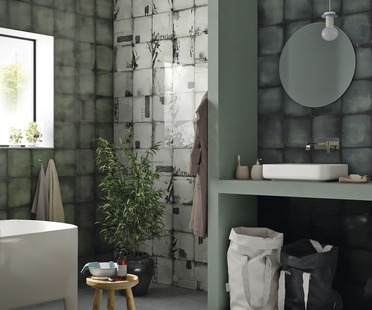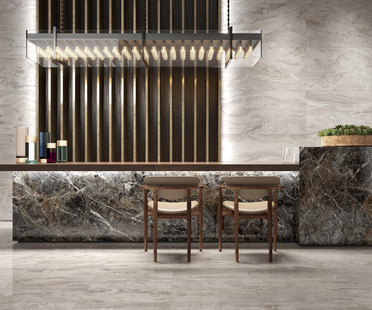13-08-2021
Matteo Thun & Partners: Waldkliniken Hospital, Eisenberg
Matteo Thun & Partners,
Gionata Xerra,
Eisenberg (DE) ,
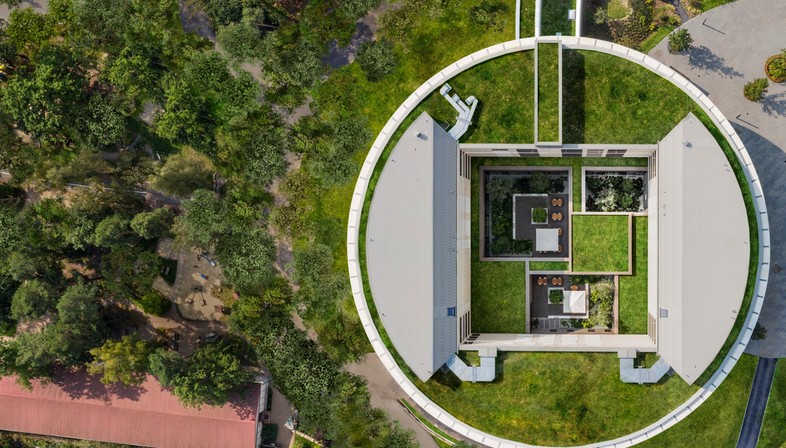
At first glance, the new wooden architecture by Matteo Thun & Partners in Eisenberg might very well look like the latest of their hotels or spas. The famous JW Marriott Venice Resort & Spa, the Merano Thermal Baths or La Pergola Residence - also in Merano - are just a handful of the new construction projects with which Thun has made a name for himself in his more than twenty years in the industry.
In actual fact, the Waldkliniken in Eisenberg, in the heart of the Thuringian forests, is an extension to a hospital, specifically the largest specialist orthopaedic centre in Germany. Recently, Matteo Thun and his Milan-based firm have shifted the focus of their research to applying the models and quality standards usually reserved for hotels - and successfully tried and tested the world over - to the field of ‘medical hospitality’. The common root of the terms ‘hospital’ and ‘hospitality’ - both from the Latin hospes, guest - sheds light on a simple truth, namely the relationship between healthcare and accommodation.
An idea that has always been overlooked in the public sphere, it was the focus of a conference at the Venice Biennale entitled “Hospitecture” - but even years before that, it had inspired Thun to participate in the competition to design the new wing of a public hospital, the Eisenberg Orthopaedic Centre. The new building, adjacent to the surgical wing, was earmarked for rooms for patients pre- and post-hospitalisation requiring medical treatment.
Against all odds and despite their lack of experience in this specific field, the design submitted by Matteo Thun & Partners was selected and recommended by the Ministry of Thuringia because the concept was the most eco-friendly, sustainable and affordable option submitted. As such, people noticed not only Thun’s ability to develop high-quality, but not “luxury”, hospitality solutions - as he himself often describes them in his interviews - for the benefit of patients, but also the overall sustainability of the project. Indeed, the new building was designed according to the ‘Three Zeros’ principle: Zero Kilometres, i.e. using locally sourced construction materials and local expert workers; Zero CO2, i.e. limiting energy consumption and reducing emissions; and finally Zero Waste, i.e. lifecycle management in the construction process and reusing materials.
Wood - a material used extensively by the firm, not only due to its associations with a homely feel and how it ages, but also because it is a renewable resource - covers the façades of a circular building in which the use of reinforced concrete has been limited to the supporting structure alone, as required for fire protection. Inside, there are 128 inpatient rooms with a total of 246 beds and a range of guest services inspired by the world of hotel hospitality. Locally sourced larch has been arranged as a brise-soleil along the side surface of the entire building to provide shade for the rooms, alternating with floating glass sections which serve as chimneys for light and air, creating atmospheric differences between the two parts. This visual rhythm follows the organisation of the floor layouts, which is centred around the design of the patient rooms. The standard rooms accommodate two patients, with a private area for each of them, and share a “veranda” with a second room with a mirrored layout. Corresponding with the floating glass panels on the façade, this bright and airy space - ventilated by openable windows - was designed to be a shared yet private area, in that it can be separated from the private spaces by curtains. The architect’s thinking on this focused on the fact that, when undergoing treatment in hospital, the patient’s discomfort is in part due to the lack of a space for private conversations with doctors or loved ones, when they visit. With this in mind, the room has a Z-shaped floor plan, incorporating the bathroom and the veranda, and can therefore offer each and every guest a visual relationship with the outside world and their natural surroundings. By striking a balance between the available space and the psychological needs identified, Thun has managed to create a welcoming area that serves as a filter, suitable for four patients to share. Aside from the 13 VIP rooms that have been included for those lucky enough to have private health insurance, this solution has been applied on a large scale across all floors of the building.
According to Thun, his interest in the hotel industry is rooted in the fact that hotels are environments in which every last aspect has to be coordinated with a coherent design, from the visual identity to the architectural shell to the custom-made furnishings. This kind of attention to detail is the same that can be seen in a project such as the Waldkliniken Hospital, where a great many elements that would not usually be coordinated have been carefully crafted as a whole, all to serve the patients’ overall sense of wellbeing. This is the case with the design of the reception and the four restaurants, which in terms of materials, finishes and concept are no less sumptuous than those we might enjoy on holiday, as well as the paths travelled by the patients during their stay in hospital. To this end, the firm worked with Hospitalexpert HDR GmbH and had extensive discussions with doctors and nursing staff in order to understand the actual needs of inpatients and facilitate movement and orientation around the hospital.
Finally, the green roof and internal courtyard planted with trees not only reduce the influx of direct sunshine, thus maintaining a more comfortable indoor microclimate, but also incorporate nature into the building as a beneficial presence in the treatment process. The circularity of the floor plan stems from a desire to make the view from the inside out towards the natural surroundings as vast and varied as possible. Ten years of development for a project that turns the historical concept of the hospital as an assembly line for treatments and a ‘box’ for the sick on its head, soon to be enriched by a second project in the shape of the nearby orthopaedic rehabilitation centre, also designed by Thun. With the help of trailblazing architects, a number of healthcare institutions are experimenting with this approach. Floornature recently featured several examples of these project, including JKMM’s Nova Hospital in Jyväskylä, El Equipo de Mazzanti’s Santa Fe Foundation in Bogotá, and Martina Davanzo’s Alzheimer’s Centre in Castelfranco Veneto, Italy.
Mara Corradi
Architects: Matteo Thun & Partners https://www.matteothun.com/
Chronology: 2013 - 9.2020
Location: Eisenberg (DE)
Client: Waldkrankenhaus-Eisenberg
Building area: 15000 sq
Photos by: Gionata Xerra










